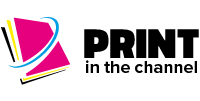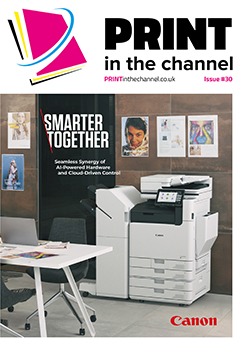With sustainability high on many business’ agenda today, reducing energy usage is a key consideration, which means demand for energy efficient printers is increasing – and OEMs have responded to this.
Sustainability is increasingly important to many businesses. Indeed, Quocirca research shows that more than three quarters of organisations are accelerating their sustainability initiatives and 69% want support from suppliers to help them reduce their environmental impact, according to Louella Fernandes, CEO of Quocirca.
A key part of businesses becoming more sustainable is reducing energy usage. “Our study also showed that energy efficiency is the second-most important selection factor for organisations, outranked only by sustainable consumables,” says Louella. “Reducing costs is cited as a primary driver for adopting sustainable solutions, and energy efficiency is a key part of that. Consequently, it’s important that resellers have a clear picture of the energy efficiency performance of the solutions they are proposing as it is a dominant selection factor.
“We also see evidence that digitisation initiatives are being driven by sustainability goals, with companies seeking to reduce the amount of paper, energy and consumables they use in the print environment. As a result of workflow digitisation, print volumes are falling, meaning resellers should think beyond page counts when building business proposals.”
Decreasing energy consumption
OEMs are continuously working to reduce energy consumption of devices in use and at rest, says Louella. “ENERGY STAR® and EPEAT certification are the most common standards, and we are also seeing remanufactured devices now qualifying for these,” she says.
There are various ways that OEMS are making their printers more energy efficient, and it is about much more than just the amount of power they consume. Duncan Smith, country director, production, UK & Ireland at Canon, says the potential for energy efficiency goes far beyond the device itself.
“To address indirect carbon emissions – i.e. scope 3 carbon emissions – businesses are expanding their outlook and looking further down the supply chain to the energy efficiency of their wider supply network,” he says. “In this way, innovation in the print market can be seen – and is now being measured – in an entirely new light.
“As a result, OEMs must adapt their approach and focus on providing businesses with a holistic service that goes beyond equipment and the immediate emissions of print devices. Leaders in the market are now considering energy efficiency at every level of their operation; from the energy consumption of at-home devices to the renewable energy sources used for large-scale manufacturing sites.
“Canon now sources 78% of its electric power in Europe from renewable sources and is continuing to commit to more sustainable targets. At the heart of Canon’s sustainability initiatives is the philosophy of ‘Kyosei’ or ‘living and working together for the common good’. This philosophy is reflected in the design of Canon devices, which are designed to run at minimal energy levels and maximum efficiency, meaning an energy efficient workflow goes hand in hand with reduced costs and higher productivity.
“Refurbishing parts is another aspect of energy efficiency that is often overlooked. By reusing parts, less energy is used to manufacture and transport new materials for device repairs. This is where resellers can help businesses to invest in an end-to-end service, with a trusted vendor, that can help businesses to optimise their supply chain efficiency and contribute to a more circular industry.
“To reduce scope 3 emissions, businesses need to take accountability for their environmental impact upstream and downstream in the value chain. That is why partnering with an accredited vendor that is aligned with the business’ sustainability commitments can become their greatest asset. With on-the-ground support, Canon’s team of experts help channel partners to reduce their energy consumption in more ways than one.”
New technology
Phillip John, category manager office at Konica Minolta Business Solutions (UK) Ltd, adds that there is a cost saving bonus to energy efficient printers. “In many cases, sustainability will be the chief driver in looking to reduce energy usage, but cost savings will always be an attractive benefit too,” he says.
Energy efficiency is an important consideration in the development of new print devices, Phillip adds. “At Konica Minolta, for example, we are refreshing our bizhub range currently and one of the new options is a paper sensor that looks at the paper that is being used and automatically changes the print settings accordingly,” he says. “This allows you to use the optimal efficiency setting for example – with thinner paper the fuser temperature doesn’t need to be as high to achieve the desired print result.
“In the past, the printer may have been set up to expect different paper stocks in different trays, but if the user changed this unexpectedly it was harder to run the machine at peak efficiency. Technology that automatically looks for efficiencies makes it much easier for businesses to make savings without having to continually micromanage their print operations.
“The new Konica Minolta paper sensor is a perfect example of a technology that looks to match print job needs with resource usage of paper and toner as well as energy efficiencies. All consumables have an impact on sustainability so ensuring efficiencies across the board is important. We also offer our latest SimitriV toner, which has a fixing temperature 15 degrees lower than the previous toner and therefore adds even further to the energy efficiency gains.”
Reseller role
With so many elements to highlight on printers, resellers have a crucial role in guiding customers to find the right solution. Manufacturers also have an important part to play in ensuring resellers and end users are armed with the information and facts they need to make fully informed decisions, says Phillip. “This includes energy usage in different print modes or performing various tasks such as scanning, for example,” he says. “Konica Minolta’s info portal, for instance, publishes environmental datasheets on each of our product ranges to ensure this information is readily available for reference.”
Phillip adds that resellers should be guiding customers through the sustainability of all aspects of the print process. “This is from delivery, through to the lifespan of the printer, and its inevitable end-of-life options for recycling,” he says. “Another area of sustainability is packaging and specifically replacing non-recyclable Styrofoam with an air-filled cushioning packaging alternative. The plastic wrapping is perfectly shaped to fully protect all the parts during transit, but once that is done it is highly recyclable to avoid landfill and once deflated takes up very little space.”
Louella adds that different technology approaches – such as laser versus inkjet – affect energy consumption and manufacturers will typically provide evidence detailing the energy impact of the technology in question. “It’s important that resellers press vendors to provide full information about the efficiency and wider environmental performance of their devices,” she says.
“But our research shows that this is one of the challenges around marketing environmental solutions: 48% of channel partners we talked to in our 2023 channel sustainability study said they would like more clear and detailed metrics on product lifecycle impact from vendors.”










